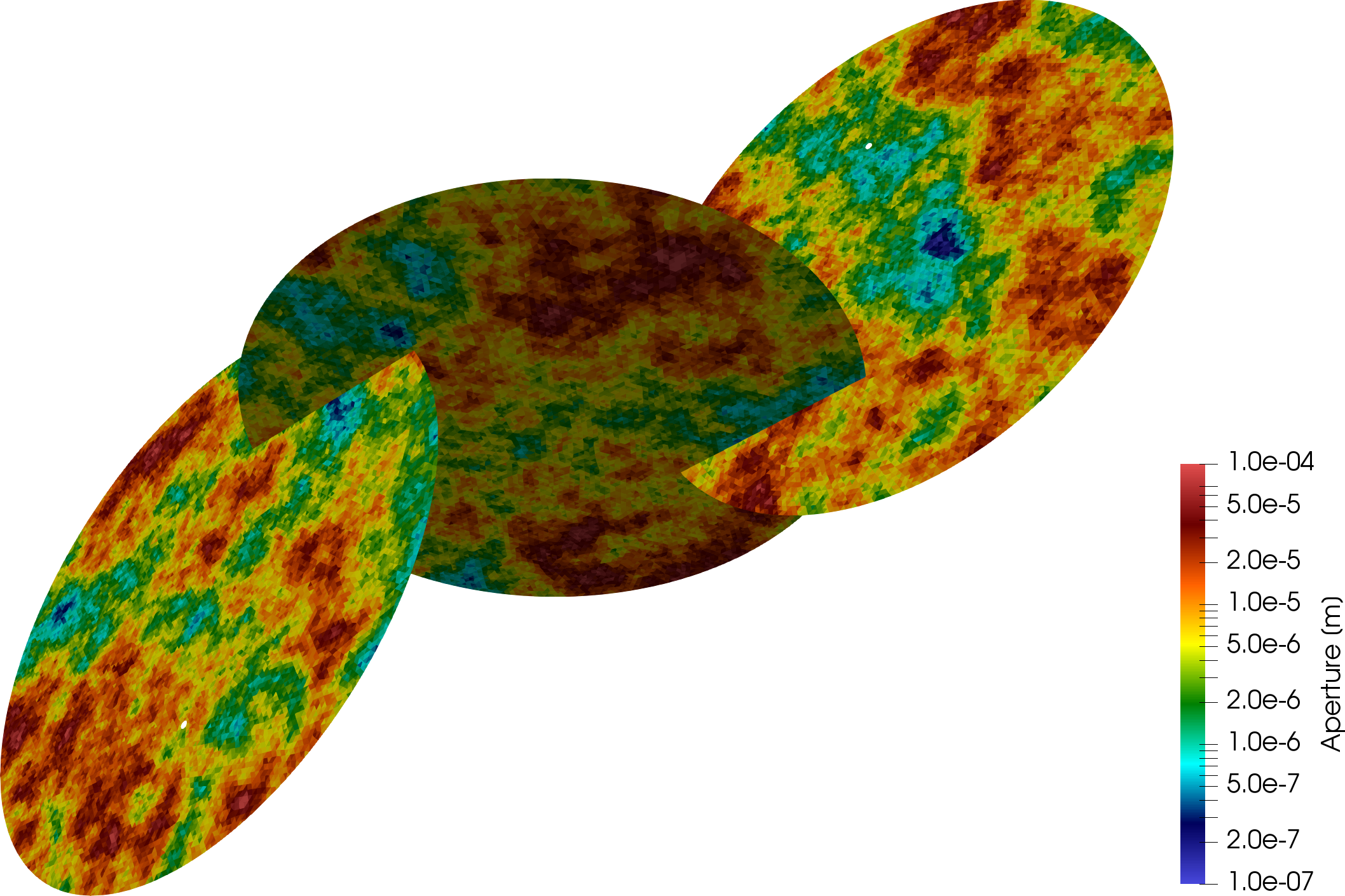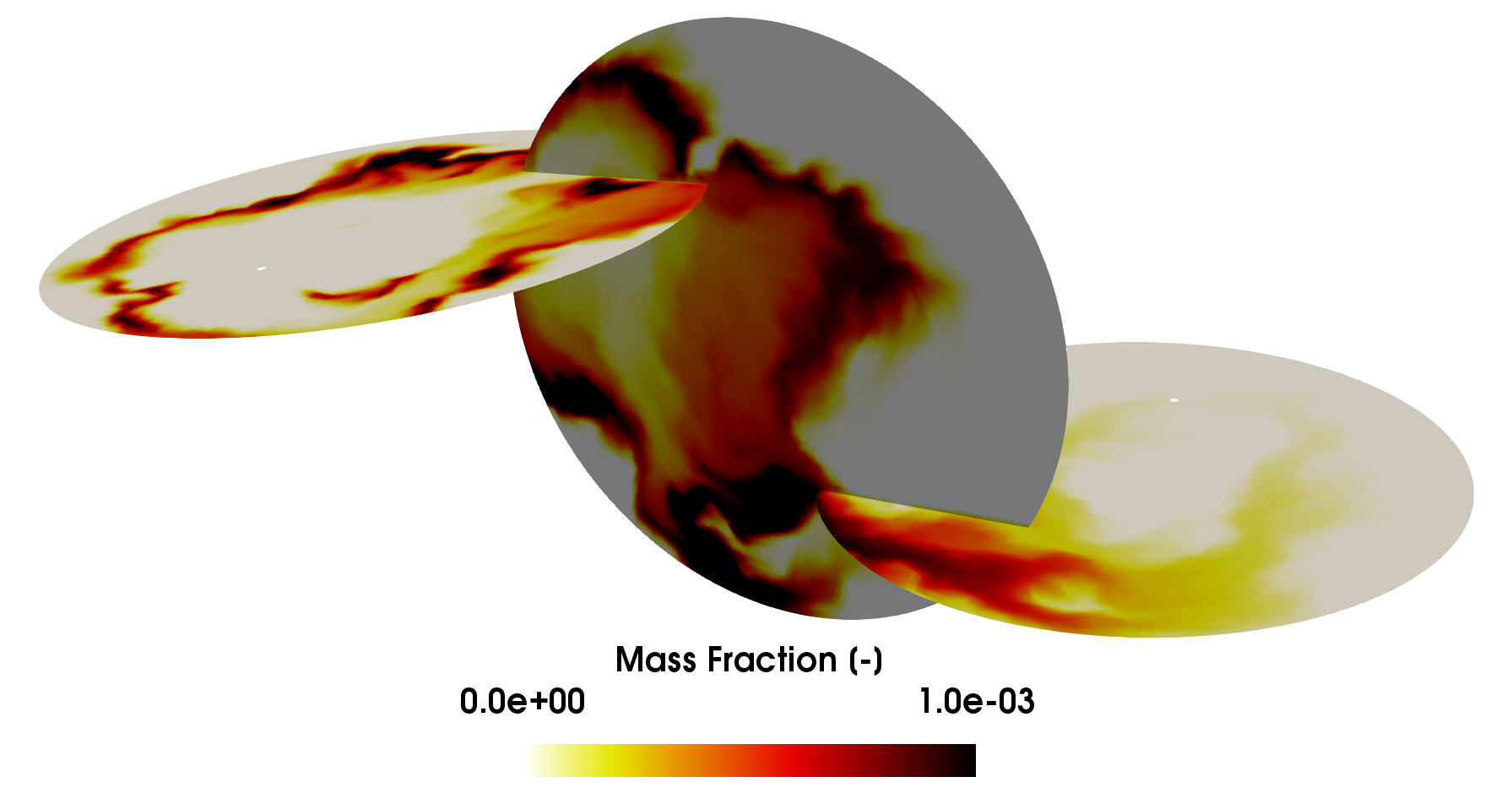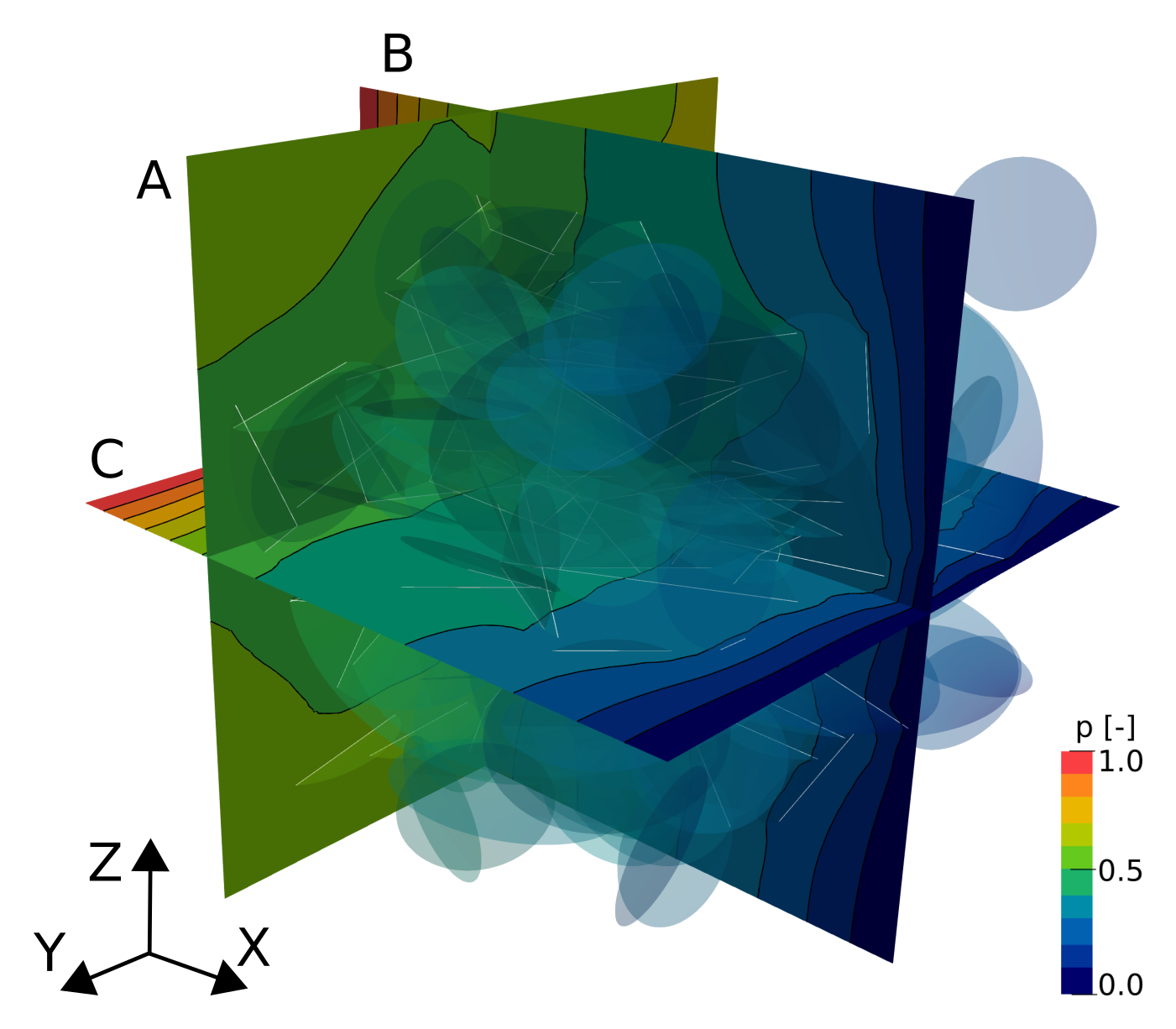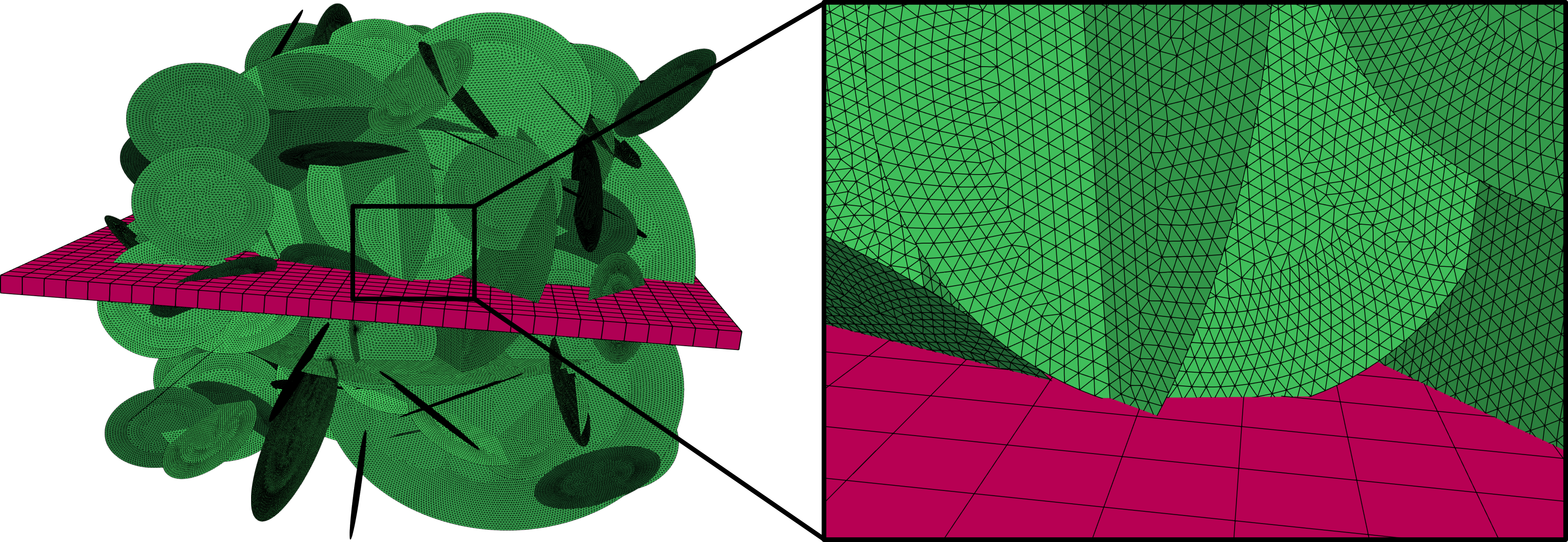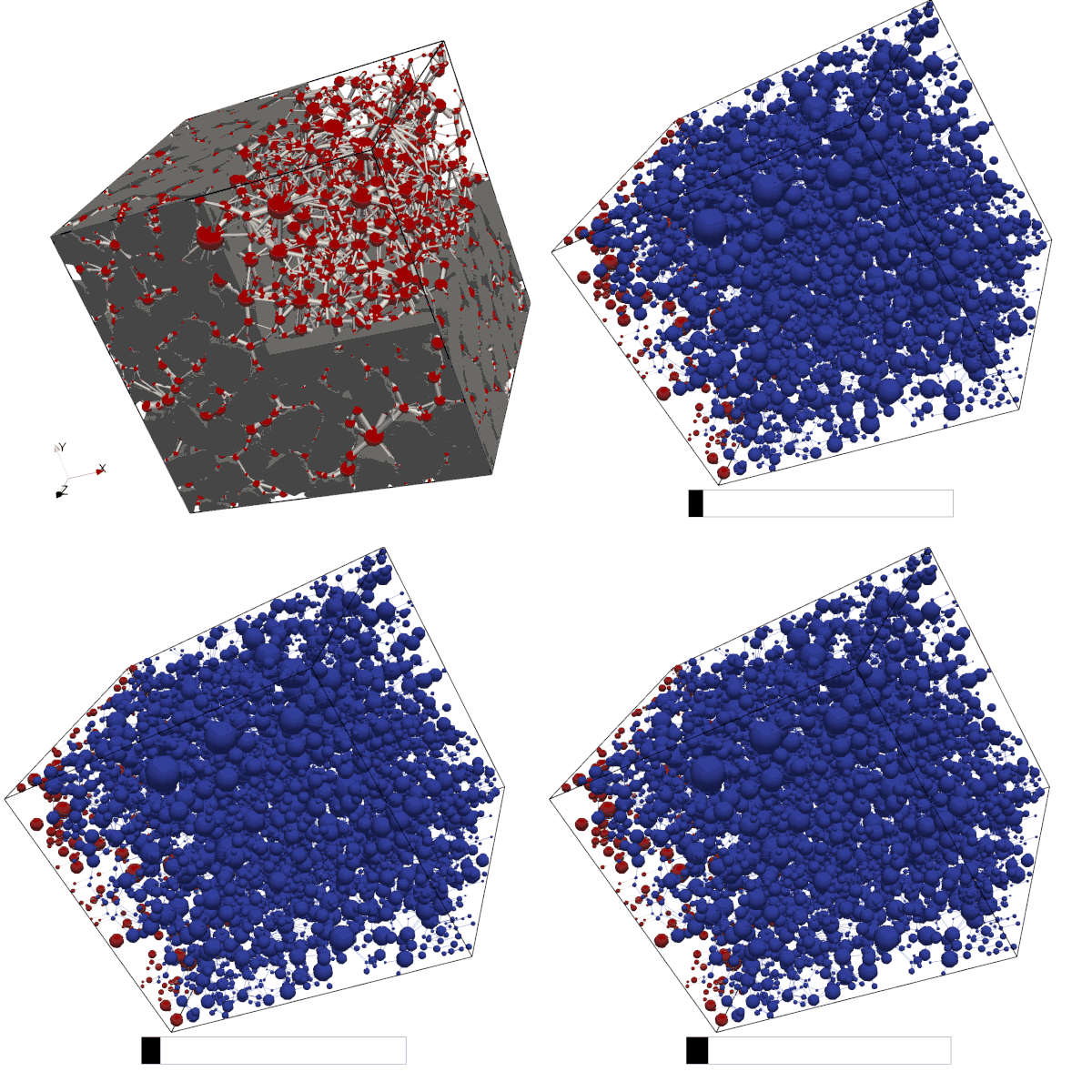METHODS & LABS
Computer Simulation – Numerical modeling
Simulations at the pore, lab, and field scales constitute part of our research work. Typically, they involve subsurface multiphase fluid flow, heat transfer, reactive transport, and geomechanics, with applications in such fields as geothermal energy, subsurface carbon dioxide storage, groundwater, oil/gas. Pore-scale simulations improve our understanding of fundamental processes. Lab-scale simulations accompany our laboratory experiments. Simulations at the field scale help address concrete application-based questions.
We use various well-known simulators, including TOUGH2, TOUGHREACT, PetraSim, PFLOTRAN, DuMux, and GEOS. For very computationally intensive simulations, we have access to ETH’s Euler and the University of Minnesota’s high-performance computing systems.
The group is also working on the development of new codes. Reaktoro, our in-house geochemistry model, developed by Dr. Allan Leal, provides methods for chemical equilibrium and kinetic calculations for multiphase systems.
Project: Modeling tracer transport through rough fractures using the MOOSE simulation environment
Project: Embedded Fractures – Utopia
Project: Reaktoro
Project: Pore-Network Modeling
Quasi-static (Drainage and Imbibition) simulations of two-phase (scCO2-Brine) in a natural rock sample (Nubian Sandstone, Egypt) to incorporate the effects of CO2 trapping.
Project: Assessment and optimization of carbon storage and combined EGR-CPG development from high-temperature natural gas reservoirs
An example of a numerical simulation study, carried out with TOUGH2 and the PetraSim GUI, showing the distribution of total gas saturation after injection of CO2 in an almost depleted natural gas reservoir for enhanced gas recovery and
geothermal energy recovery. Note that the gas is trapped by the anticlinal structure of the reservoir.




